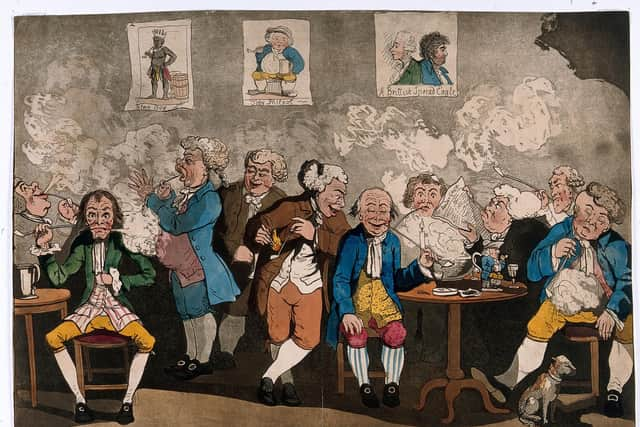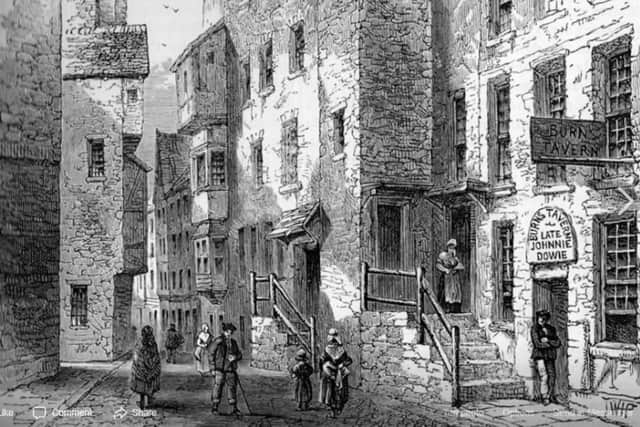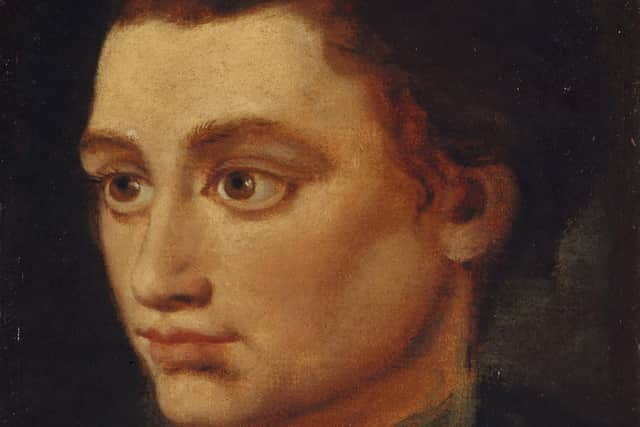Edinburgh's lost drinking clubs and their curious rules and rituals remembered
They had names such as The Cape Club, the Poker Club and the Wig Club and sometimes came with secret memberships, special headwear and their own particular rituals. One had a fighting rooster as its elected president and another an appointed official called the assassin.
These societies “bloomed like mushrooms after the rain", according to one historical account, in a city touched by the enlightenment and growing distaste to religious hold on morality. The clubs were defined by drinking and thinking and some were serious in their aims, such as seeking powers for Scotland to raise its own militia. Others were rooted simply in the need for hi-jinks and the company of others.
Advertisement
Hide AdAdvertisement
Hide AdThe taverns off the Royal Mile, where every other close glowed with hospitality, were central to this burgeoning club life. While housing before the arrival of the New Town was cramped and drinking water unreliable at best, the ale houses hummed with life from morning to night.


Ministers and magistrates, judges and bank clerks, advocates and tradesmen rubbed shoulders in the taverns and “wetting a bargain” was part of daily business. At Paxton’s tavern, the city fathers met to “splice the rope” – or make arrangements for an execution – while Fortune’s Tavern in Stamp Office Close was the headquarters of the General Assembly.
The Isle of Man Arms in Craig's Close was home to The Cape Club, a version of which still exists today. Dating from the mid-18th century, its Sovereign was decorated with a velvet cap decorated with gold lace and two embroidered clasped hands. Two specially-made household pokers served as a symbol of his authority.
All members, or Knights Companions of the Cape, which peaked at 600 and included ordinary tradesmen and artistic heavyweights, were sworn to secrecy about the proceedings of the meetings. Each one took on a pseudonym based on a personal characteristic, with names such as Sir Silence, Sir Heavyhours and Sir Complaints cropping up in the clubs “sederunt” book. Among past members were painters Alexander Nasmyth – or Sir Thumb – and Henry Raeburn, who was known as Sir Discovery.


Sir Precenter was the name taken by poet Robert Fergusson. The club became an important fixture of his life with his portrait, which hangs in the Scottish National Portrait Gallery, painted by fellow Knight Alexander Runciman. Fergusson dedicated his poem Auld Reekie to fellow Knights and when he endured a head injury that led to his death, aged just 24, the Cape Club donated to a fund for his care.
The Cape Club thrived around the time city leader’s introduced a 10pm curfew to curtail drunkenness and may have been named after the practice of “doubling the cape” when late revellers had to pull off a quick rouse to distract the guards at the city ports.
“At the sound of the 10 o’clock drum in the Royal Mile, celebrated like so many things like Fergusson, the prince of good fellows, there emerged into the streets one of the weirdest processions one can now conceive, representing all classes of lowlife and all stages of insobriety,” an earlier account of the curfew in the Edinburgh Evening News said.


Today, the Cape Society of Edinburgh meets twice a month, with its informal Manor meetings described as “convivial evenings” where matters of its “beloved” Edinburgh – past and present – may be discussed.
Advertisement
Hide AdAdvertisement
Hide AdBack in the 18th century, there was, it appears, a club for everyone. At the Spendthrift Hub "no member was permitted to spend more than half a penny while members of the Dirty Club were not permitted to wear clean linen”. The Pious Club appears to have been as much associated with pies and ale, as with piety. Meanwhile, the Assembly of Birds Club, founded in 1733, had game cock as an elected president and a blackbird as its treasurer.
The Edinburgh Convivial Club was founded in 1762 in the White Horse Tavern. It’s motto was “Vive La Bagatelle” – or Long Live Trifles – in a nod to its commitment to the enjoyment of the simple things in life.
While many clubs were harmless purveyors of bonhomie, the sexually-charged Hell Fire club, the Sweating Club and the Ten Tumbler Club were known for riot and excess, according to accounts.
Meanwhile, The Poker Club was one of the most popular clubs of the day. Led by philosopher and historian Professor Adam Ferguson, its aims were both political and social, with members calling for powers for Scotland to raise its own armed militia, as was the case in England.
"[Prof] Ferguson himself is said to have suggested the name 'Poker Club' when he was standing by the fire with a poker in hand,” one account said. “The Poker Club was to stir up an inert country and 'to poke' the fire of patriotic zeal in demand for restoration of the country's rights.”
The club, which was described as being “very jovial”, initially met in Thomas Nicholson’s tavern near the Mercat Cross where a shilling dinner was enjoyed with sensible amounts of sherry and claret, with lively political discussions at the heart of the gatherings. It later moved to Fortune’s Tavern following a row with the landlord, with membership then tailing off. The man charged with collecting dues for non attendance was known as the assassin, given the “unpleasantness of his post,” according to one account.
Comments
Want to join the conversation? Please or to comment on this article.